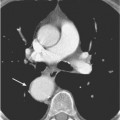Pursuing a career as a radiologist can be rewarding, but it requires dedication, extensive education, and a passion for healthcare. As a radiologist, your role will involve diagnosing and treating diseases using imaging technologies like X-rays, MRIs, and CT scans. The path to becoming a radiologist is not easy, but if you’re determined to work in this field, it’s worth the effort.
To understand how to become a radiologist, looking at the academic journey ahead of you is essential. If you’re feeling overwhelmed by the complexity of writing applications or keeping up with your coursework, seeking help from a professional essay writer can give you the support you need. This guide will help you understand the educational steps, the degrees required, and the career opportunities available for aspiring radiologists. Websites like MyAssignmentHelp can help write an essay and guide you through the problems.
What Is Radiology and Why Choose It?
Before diving into the educational path, let’s define radiology. Radiology is the branch of medicine that uses medical imaging to diagnose and sometimes treat diseases within the human body. Radiologists are medical doctors trained to analyze these images to provide vital information needed for patient treatment.
Choosing radiology as a career offers a blend of technology and medicine, allowing you to work in high-tech environments and play a crucial role in patient care. If you’re interested in medical science, problem-solving, and working with advanced imaging technology, radiology could be the right career choice for you.
What Is Radiology Major?
While there isn’t typically a specific radiology major at the undergraduate level, students who are interested in becoming radiologists often pursue degrees in fields like biology, chemistry, or physics. These majors lay the groundwork needed for medical school and subsequent specialization in radiology.
What Degree Do You Need to Be a Radiologist?
To enter the field of radiology, you must initially earn a bachelor’s degree in a pre-medical discipline such as biology or chemistry. There is no specific radiology major at this stage, as mentioned above, but it’s important to complete courses in physics, biology, and chemistry to prepare for medical school.
Upon completing your undergraduate studies, the next step is medical school, where you can earn a Doctor of Medicine (MD) or Doctor of Osteopathic Medicine (DO) degree. After medical school, you will begin radiology-specific training through residency programs, which is where you’ll gain specialized knowledge in interpreting medical images.
How Long Does It Take to Become a Radiologist?
The process of becoming a radiologist is lengthy, typically taking 13 years of education and training after high school. This journey involves four years to earn a bachelor’s degree, four years in medical school, and a five-year residency program. Some radiologists choose to pursue additional fellowships to specialize further, which can add 1 to 2 more years.
So, how long does it take to become a radiologist? In total, it usually takes between 13 and 15 years, depending on whether you pursue additional specialization through fellowships.
Radiology Schooling and Training Path
Radiologist Schooling Requirements
Radiologists must complete rigorous training in both general medicine and specialized radiology practices. After obtaining an MD or DO degree, radiologists enter a 5-year residency program. During the first year, they often complete a general medical internship. The remaining years are dedicated to learning radiology practices, including diagnostic imaging, interventional procedures, and radiation therapy.
These radiologist schooling requirements ensure that you are not only well-versed in medical imaging but also capable of working with various medical teams and making critical diagnostic decisions. You must pass several licensing exams, such as the United States Medical Licensing Examination (USMLE) or the Comprehensive Osteopathic Medical Licensing Examination (COMLEX).
Fellowships and Specialization
Following their residency, some radiologists opt to further specialize by entering fellowship programs. Fellowships provide additional training in subspecialties like pediatric radiology, interventional radiology, or neuroradiology. These programs last 1 to 2 years and allow you to refine your skills in a particular area of radiology.
Path to Becoming a Radiology Technician
Radiology technicians, also known as radiologic technologists, differ from radiologists in that they are not physicians but are trained professionals who perform diagnostic imaging tests. If you’re interested in a quicker path into the medical imaging field, becoming a radiology technician is an option.
Here are the steps to become a radiology technician:
- Complete an accredited radiology tech education program, which typically lasts 2 to 4 years.
- Earn an associate’s or bachelor’s degree in radiologic technology.
- Complete and pass a certification examination administered by the American Registry of Radiologic Technologists (ARRT).
- Successfully complete and pass a certification test conducted by the American Registry of Radiologic Technologists (ARRT).
Radiology tech education is less extensive than that of a radiologist, but it still provides crucial hands-on experience with imaging equipment. This can be a great career option if you’re looking to enter the healthcare field without the long schooling required to become a radiologist.
Conclusion
Becoming a radiologist requires a significant commitment to education, but the career rewards are well worth the effort. With a clear understanding of how to become a radiologist, you can start preparing for the long but fulfilling journey ahead. Whether you’re pursuing an MD or DO or considering a career as a radiology technician, understanding what degree you need to be a radiologist and following the steps outlined above will set you on the right path. The field of radiology offers diverse career opportunities, from diagnostic work to specialized procedures, allowing you to make a lasting impact on patient care.
Stay updated, free articles. Join our Telegram channel

Full access? Get Clinical Tree








